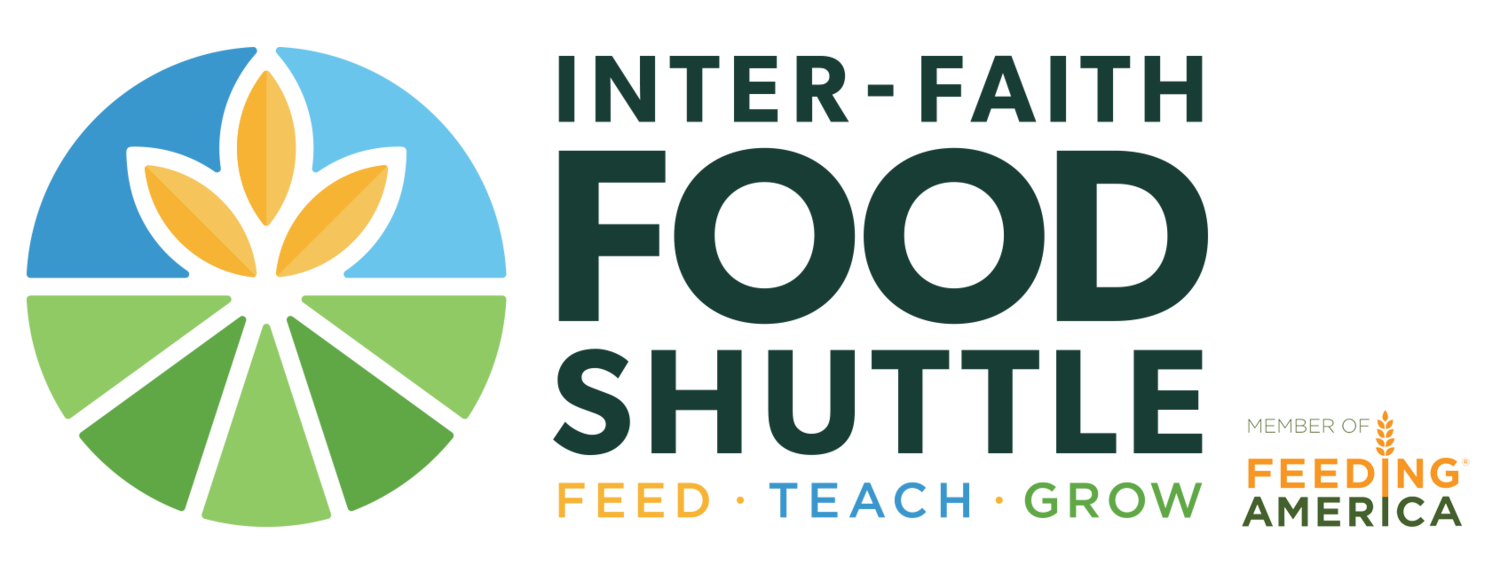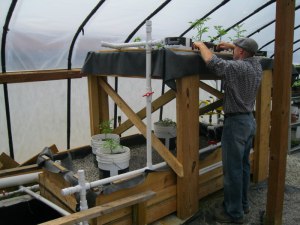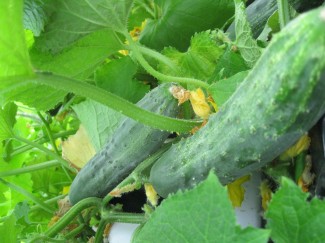Mohan Palleti is an engineer by profession, and has worked in both agriculture and fisheries separately. His work with aquaponics at IFFS is now allowing him to bring those interests together for the first time. His partner, Ben, has worked with Aquaponics before and was excited for the opportunity to work in the environment of the Teaching Farm, around others excited to learn and share ideas. The two Incubator Farmers have taken over the management of the aquaponics system at the IFFS Teaching Farm and have expanded it beyond the original two gravel grow beds to include a bucket system as well as horizontal pipe system. Aquaponics is a closed-loop system of growing vegetables and fish at the same time in symbiosis - hence, the duo's name - Ef-FISH-ient Food! The aquaponics system originally built on the Inter-Faith Food Shuttle (IFFS) Teaching Farm is based on the concepts that IFFS farm staff learned at Growing Power’s Commercial Urban Agriculture series in Milwaukee. IFFS started this system to use primarily as a teaching tool, showing people the capabilities and benefits of aquaponics.
“I like aquaponics because it’s one of those systems that while it seems more complex, and you’re taking two different types of complexities – aquaculture and a hydroponics system – and putting them together, what’s great about the system is that it really is a synergistic system – one in which both complement each other very well, and they’re both much easier than doing each part individually. With aquaculture, you have waste issues. In hydroponics you have water treatment issues. When you put the two together, one takes care of the other.” –Ben Keefer
In an extension from IFFS’s original system, half of the nutrients produced by the fish waste are now also pumped through pipes underground to feed plants growing in horizontal pipes (which might be useful in rocky areas where growing in soil is difficult) and in Dutch buckets. Mohan and Ben are also testing a vertical hydroponic system (which might be useful in compact urban area where space is lacking), watering the plants manually with some of the water enriched with the natural fertilizer produced by the fish.
Part of Mohan and Ben's experiment is to test which plants grow better in what medium given the constant of the same fish-waste-enriched water from the Aquaponics system -- Perma Till vs. soil vs. just water. That way, they can determine the system best suited both for specific spaces and specific plants!
The IFFS Incubator Farm Program supports and grows new viable, independent farm businesses and helps build a healthy, hunger-free local food system by serving as a model new-farmer program. The knowledge of how to grow food is an important step toward developing a locally-owned food system that builds self-sufficiency and community power. The more we understand about growing and preparing food, the more access we have and the healthier we are. You can help support our agricultural training programs by donating today, or help sustain them year-round by becoming a monthly Ground-Level Giver!








